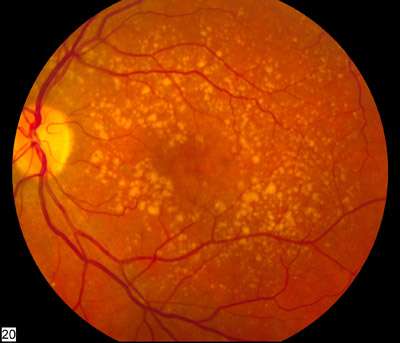Researchers pinpoint potential new therapeutic target for eye disease

Multi-disciplinary work led by researchers from Trinity has pinpointed a potential new therapeutic target for treating retinal degeneration. The researchers have discovered that a protein (SARM1) involved in neuronal cell injury may also have a role in the progression of retinal degeneration.
The research, involving experts from Trinity's Schools of Medicine, Biochemisty and Immunology, Genetics and Microbiology, and Engineering, has just been published in the journal Life Science Alliance.
Retinal degenerative diseases are prevalent in Ireland, and across the globe
Millions of people worldwide suffer varying degrees of vision-loss due to irreversible retinal degenerative diseases. In Ireland alone, approximately 5,000 people are affected by inherited retinal degenerations, while another 80,000 are known to live with age-related macular degeneration (AMD).
Photoreceptor cells are specialised neurons found in the back of our eyes that convert light into electrical signals that allow us to see. It is the death of these cells, and the cells that nourish them, that is termed retinal degeneration and is characteristic of blinding diseases such as AMD and retinitis pigmentosa.
Dr. Ema Ozaki, research fellow in clinical medicine at Trinity, said:
"Lots of different factors can initiate retinal degeneration and lead to severe visual impairment and eventual blindness, but ultimately the end-point is photoreceptor cell death. Although it seems unlikely the process of cell-death is—in fact—a programmed or organised event that directs proteins in our cells to take on 'executioner' roles."
In this research, the team led by Dr. Sarah Doyle, assistant professor in immunology at Trinity, investigated the role of one such "executioner protein" called SARM1.
SARM1 has come to the fore recently in the study of brain and spinal injury, as it is highly efficient at triggering the degeneration of neuronal cells. While the retina is an extension of the brain, this report is the first to describe a role for SARM1 in photoreceptor cell biology.
Explaining the significance, Dr. Sarah Doyle, said:
"Our research indicates that SARM1 is likely to be a key executioner in the process of retinal degeneration, because if we remove it from our experimental model system this has the effect of delaying the photoreceptor cells from dying."
"This is an important finding because the first steps involved in processing 'light into sight' take place in the photoreceptors. As a result, losing photoreceptors ultimately equates to losing vision. For this reason, interventions that prevent or delay photoreceptor cell death are critical to preserve sight for as long as possible in people with degenerative retinal diseases."
The research team was also able to show that the protected and surviving photoreceptors maintained their function and continued to transmit electrical signals to the optic nerve. This research has therefore provided a new therapeutic target to slow the progression of blinding diseases.
Dr. Sarah Doyle added:
"This is particularly exciting for the future because others have recently shown that a gene therapy approach for inhibiting SARM1 is effective in protecting against neuronal degeneration. We know that gene therapy is well suited as a treatment for retinal disease, so such an approach for inhibiting SARM1 activity may offer an option for protecting vision across multiple retinal degenerative diseases."
More information: SARM1 deficiency promotes rod and cone photoreceptor cell survival in a model of retinal degeneration, DOI: 10.26508/lsa.201900618 , www.life-science-alliance.org/ … ntent/3/5/e201900618




















